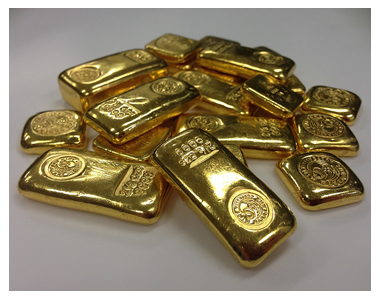--
|
Gold:
Gold Mines -
Ghost Towns
The Search for Gold
The search for gold still offers a special excitement
for many people. They hope to "strike it rich" by
panning gold. What they do not realize is that most
placer deposits have been thoroughly reworked at
least twice first by those who entered immediately
after the initial boom periods of the late 19th
century to glean the lower grade deposits and
tailings and later by prospectors during the Great
Depression of the 1930s. During the "rush" of the
1970s and 80s, when the price of gold was at an
all-time high, many of these areas were worked
once again.

Gold ore - NPS Joshua Tree National Park archive
Nevertheless, a chance for success may still remain
if you choose favorable areas after a careful study
of their geology and mining records. If you are
prepared to undergo a certain amount of hardship,
possess a vehicle capable of traveling the roughest
and steepest roads, and are not discouraged by
repeated disappointments, a prospecting trip may
prove to be interesting.
The search itself is often its own reward, but there
are things you should consider before setting out
on a prospecting expedition.
It is a conservative estimate that about 1 in
1,000 people who have prospected in the western
United States ever made a "strike." Most of the
gold mining districts in the west were located by
pioneers, many of whom were experienced gold
miners from Alabama and Georgia. Even in those
pioneering times however, only a small number of
prospectors found valuable deposits. However, the
best chances of success are in known productive
areas, rather than in unknown areas.
Lode gold is gold within solid rock. The areas
that are likely to contain valuable lode deposits of
gold have already been explored carefully and
thoroughly. These days the inexperienced prospector
without ample capital has very little chance
of discovering a lode rich enough to develop. Such
known areas in California are the Mother Lode,
Grass Valley-Nevada City, and Alleghany districts.
A placer deposit is a concentration of natural
material that has accumulated in the unconsolidated
sediments of a stream bed. Heaviness and
resistance to corrosion make gold an ideal substance
to accumulate in placer deposits. Panning
is the simplest method of separating the gold from
the silt, sand, and gravel of the stream deposits. It
is the method most commonly used by the
beginning prospector.
The gold pan, an indispensable prospecting
tool, is versatile, efficient, inexpensive, and portable.
With some practice, even an inexperienced
panner should be able to recover most of the gold
from the sand and gravel. Gold is much heavier
than the minerals that make up the sand and gravel;
when the water is shaken and swirled, the grains
and flakes of gold sink and collect on the bottom
of the pan. As the lighter materials are winnowed
from the gold, they are removed from the pan.
o Many placer districts in California were mined
on a large scale in the mid-1950s and as recently as
the mid-1980s. The streams that drain the rich
Mother Lode the Feather, Mokelumne, Sacramento,
American, Cosumnes, Calaveras, Yuba,
and Trinity rivers in northern California, have
concentrated considerable gold in gravels.
A REMINDER!
You must always obtain permission from the owner
to prospect on private property. Before prospecting
on federal land, contact the U.S. Bureau of Land
Management at (916) 978-4400.
source - CSGS
|

|

